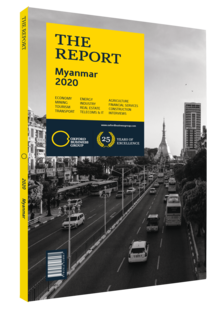U Ye Min Aung, Secretary-General, Myanmar Rice Federation; and Managing Director, Myanmar Agribusiness Public Corporation: Interview

Interview: U Ye Min Aung
In what ways can Myanmar diversify production?
U YE MIN AUNG: Diversification is great in theory, but it is difficult to achieve. It requires state support and economic strength. If we examine regional trends, it took Thailand and Vietnam decades of commercial rice farming to gather the financing and technical ability to diversify at scale. On top of that, our market has unique issues to overcome. Before diversification can truly take place, we need to study our ecology to enable us to use it effectively. Following Cyclone Nargis in 2008 we have seen an increase in pests and disease. Additionally, Myanmar’s farmland consists mostly of paddy fields, which are not immediately suitable for vegetable cultivation without treatment.
In agriculture supply-side policies tend to fail, so if we insist on diversification before we are able to bring it to scale we will not succeed. Diversification within a commodity chain is what we can consider. With rice, for instance, we do not currently manufacture rice oil, biscuits, cosmetics or noodles. Globally, rice consumption has slowed but the market for rice-based products, such as glucose, is growing. Meanwhile, the country consumes 80% of the rice it produces, meaning that diversification for the sake of exports alone is not necessary, although these exports do help ensure sectoral price stability and absorb market shocks. The number of countries Myanmar exports to has grown considerably in recent years, almost tripling from 20 countries in 2012 to nearly 60 by 2019. There has also been significant improvements in the quality of production, with certification having played a role in this. We have international laboratories and inspection companies coming to Myanmar to verify our output, and this is raising standards right across the supply chain.
How would you assess the technology and storage facilities in the sector’s supply chain?
YE MIN AUNG: Adequate storage facilities are vital for Myanmar. Without effective drying equipment the effects of climate change are acutely felt, with crops being ruined. Improvements are slowly taking place, but the sector needs investment as it is undercapitalised and lacking expertise. On the farming side, moves towards more effective and sustainable practices are under way but they are only in the early stages. For instance, drip irrigation is starting to be implemented and can greatly increase efficiency, improve soil quality and reduce methane emissions by removing the need to flood rice paddies. Rice cultivation needs to be intensified in Myanmar, though not at the expense of the environment. The System of Rice Intensification developed by Cornell University provides a great method for maintaining this balance, with an emphasis on controlling inputs and plant management, and it has already seen success in Myanmar. Naturally, pesticides are still necessary in the sector, but there needs to be more education concerning their application, and businesses have a responsibility to support this. It is in the public interest to ensure that safety regulations are in place and illicit trade is kept to a minimum. In addition, farmers must follow health and safety procedures.
Access to finance remains the largest challenge in the sector. Without this, it is difficult to improve irrigation facilities, quality and yields, and storage capabilities. Our neighbours developed their agricultural sectors with the help of consistent, innovative and well-capitalised financial solutions. The Myanmar Agriculture Development Bank has a huge role to play in the sector, and we encourage the government to prioritise its expansion. The bank already has over 220 branches nationwide, but it must focus on diversifying its product portfolio and increasing its outreach programmes. There is also a role for microfinance institutions to play, but they is not yet at a sufficient capacity level to generate real change. Though we are latecomers to mechanised agriculture, we can now use this technology to accelerate our growth trajectory. Our next step as a nation should be to prioritise expanding banking facilities for farmers.
You have reached the limit of premium articles you can view for free.
Choose from the options below to purchase print or digital editions of our Reports. You can also purchase a website subscription giving you unlimited access to all of our Reports online for 12 months.
If you have already purchased this Report or have a website subscription, please login to continue.

